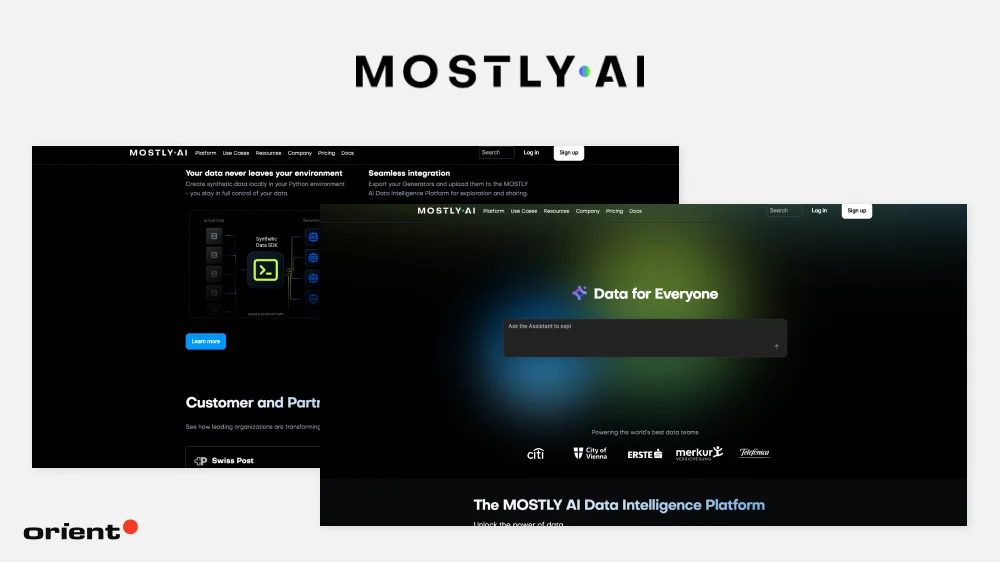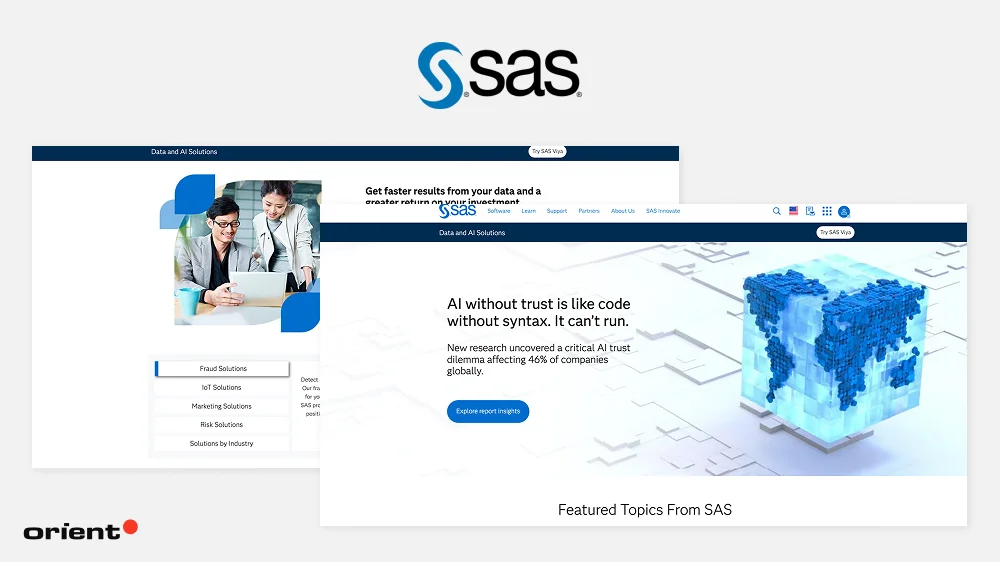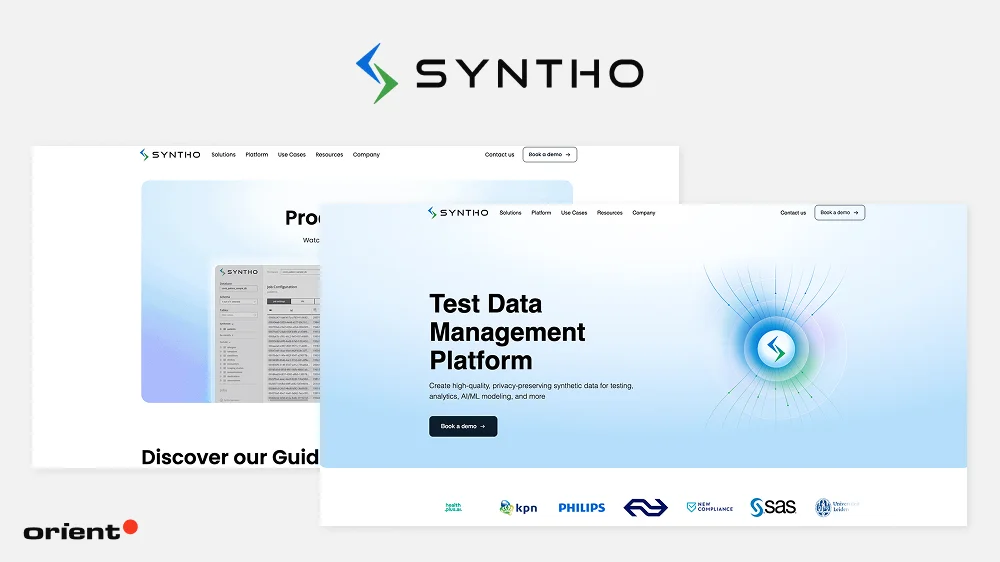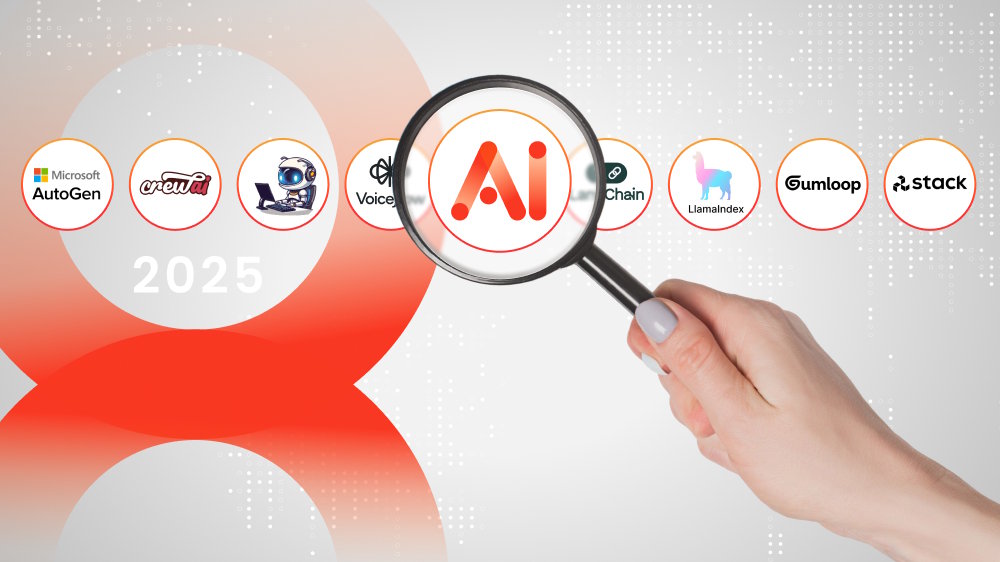
Synthetic Data Generation: Unlock the Power of Real Data with Less Time and Effort
They say that cheap knock-offs are no match for the real thing. But that’s where synthetic data is the exception. Find out how this innovative strategy helps unlock the true potential of your existing data without compromise.

Content Map
More chaptersBusinesses are collecting more data than ever. But there are limitations as to what they can do with real data. Aside from being time-consuming and expensive to collect and organize, real data can also be hard to come by. This scarcity increases the risk of bias and uninformed decision-making.
Synthetic data overcomes the limitations of real data by being easier and faster to obtain. It is also more versatile, as it can accommodate a wider range of software testing and AI model scenarios. Understanding what synthetic data is and how it works can help take your data strategy to the next level.
Read on to discover what synthetic data generation is and how it works. We’ll also cover popular synthetic data generation tools, practical guides, and best practices to follow.
Key Takeaways:
- Synthetic data replicates the properties of real data without exposing sensitive information, helping organizations overcome data scarcity, privacy issues, and bias.
- It enables faster and safer AI training and comprehensive software testing, even in cases where real-world data is limited or unavailable.
- A variety of generation techniques, from generative AI models to rules engines and data masking, allow businesses to tailor synthetic datasets to specific goals.
- Python libraries and dedicated tools like MOSTLY AI, SAS, and Syntho streamline the data generation process while ensuring accuracy and compliance.
- Following best practices, such as diversifying data sources, maintaining documentation, validating results, and keeping data updated, ensures reliability and long-term value.
Understanding Synthetic Data Generation
Synthetic data generation is the process of generating data that matches the mathematical properties of real data, without any Personally Identifiable Information (PII). Synthetic data can be used just like real data. You can use it to conduct research, test software, and train Machine Learning (ML) models. Computer algorithms and simulations generate synthetic data.

The main purpose of generating synthetic data is to overcome the limitations of real data. Such challenges may include data scarcity, data privacy issues, limited testing coverage, and bias in existing datasets. These problems typically occur due to the cost, time, and complexity of obtaining real data. Synthetic data overcomes these problems by being more readily available and versatile, while reducing bias and eliminating data privacy concerns.
Types of Synthetic Data Generation Techniques
Synthetic data is generated through various techniques and tools. There are pros and cons to each technique. The ones that you choose will depend on the type of data you’re working with and the goals you hope to achieve. A trusted technology partner can determine which synthetic data generation technique is right for you.

The main synthetic data generation techniques are:
- Generative AI: Generative Pre-Trained Transformers (GPT), Variational Auto-Encoders (VAEs), and Generative Adversarial Networks (GANs) are used to evaluate existing real datasets and generate synthetic data with virtually exact properties.
- Rules engine: Generates synthetic data via a set of user-defined business policies. Intelligence is added to the data by referencing the relationships between the data elements, ensuring a consistent data structure based on set rules and policies.
- Entity cloning: Involves copying and modifying existing datasets to create new, synthetic copies of the same data. The data is then altered to remove any sensitive data or PII that may pose a privacy risk.
- Data Masking: Retains the existing properties and structural integrity of the original datasets. However, any sensitive data or PII is removed. It replaces any private data with made-up pseudonyms and other altered values.
Use Cases for Synthetic Data in AI and Other Technology
Synthetic data plays a major role in developing AI-driven applications. The most common use cases for synthetic data are training ML models and testing software.

Training ML Models
What happens when an organization doesn’t have enough data to train an ML model? They use synthetic data. According to Oracle, imbalanced, insufficient, and poor-quality data are one of the leading challenges of AI model training. Security, privacy, and access concerns are another challenge.
Synthetic data helps fill the gaps present in the existing data sets. This improves the quality and accuracy of an ML model’s outputs. Synthetic data can also be modified with noise and other anomalies – properties that the real data may not contain. This enables the ML model to adapt to a wider range of scenarios. For example, a chatbot may be able to comprehend poorly written prompts more easily.
ML models trained only on real data may exhibit biases. Synthetic data can add more diversity to the training data. This helps the ML model produce more fair and objective outputs that align with user expectations.
Testing Software
Synthetic data is commonly used in software testing. Data scarcity is a common challenge among software developers. This is especially true when testing software before any user data has been collected.
By generating synthetic data and testing the application in a closed environment, software developers can identify and address bugs, issues, and errors before the app goes live. They can test how the software responds to incorrect inputs, perform load testing, and test new features before they go live.
Popular Synthetic Data Generation Tools
There are many tools that people can use to generate synthetic data. These pre-built tools serve as an all-in-one solution for synthetic data generation. From data extraction to version control to data masking, they can manage the entire synthetic data lifecycle.
At Orient Software, we use the latest synthetic data generation tools to produce incredible results for our clients. We generate highly accurate, versatile, and compliant synthetic data, giving you greater control over the quality and format of your data.
Here are just some of the many synthetic data generation tools in use today:
MOSTLY AI

An AI-powered synthetic data generation tool that aims to deliver a more efficient and reliable way to anonymize data. It is especially popular in industries where obtaining and managing highly accurate customer data is essential, such as retail, telecommunications, and insurance firms.
MOSTLY AI’s privacy protection mechanisms are in a league of their own, employing a variety of privacy-preserving mechanisms to prevent sensitive details from being re-identified. This makes it ideal for development, testing, and analysis in highly-regulated industries.
SAS (formerly Hazy)

Another popular synthetic data generation platform, Hazy, was established in 2017 and acquired by SAS in 2024. It uses AI-generated synthetic smart data to maintain the mathematical properties of real data while masking any sensitive or private information. It is frequently used in financial services and other regulated industries.
SAS offers standard connectors for leading enterprise applications and data repositories, making it easy for enterprises to replicate real data and experiment with model scenarios previously inaccessible to them.
Syntho

Designed to generate synthetic data without compromising real data integrity, Syntho is another leading synthetic data generation platform with a lot to offer. Ideal for training AI models, conducting stress tests, and sharing data with third-party partners, Syntho offers a safe, reliable, and efficient way to maximize the potential of real data – minus the safety and privacy risks.
Syntho also offers out-of-the-box connectors for 20 databases and five filesystems, making it quick and easy to convert real data into synthetic data that’s ready to use.
The Importance of Python in Synthetic Data
When it comes to generating synthetic data, there are many practical guides and tools out there. These guides help users better understand the steps to take when generating synthetic data, such as what techniques to use and why. I Working with synthetic data requires a deep understanding of data science, AI, machine learning, and software development. That’s why it’s important to partner with the right technology partner. A trusted team that has the skills, knowledge, and experience to deliver innovative solutions while safeguarding privacy and eliminating bias.
A deep understanding of Python is also essential to working with synthetic data. Why? Because Python libraries and packages are abundant. They help reduce the time, cost, and effort that it takes to generate synthetic data.
One popular Python library is ydata-synthetic. It has a user-friendly GUI powered by a Streamlit app. It allows non-technical users to start exploring synthetic data for their applications with greater ease. It can also be seamlessly integrated with the ydata-profiling data science stack, where real data can be quickly and easily matched against synthetic data.
Best Practices to Follow
By now, you should understand what synthetic data generation is and how it works. But knowing these details is just the beginning. Here are the best practices that your technology partner should follow when generating synthetic data.

Consider the Context of How the Data is Used
What is the purpose of your synthetic data? Will it be used in a highly regulated industry that regularly handles sensitive information? What outcomes do you hope to achieve? These are the important questions to answer before initiating a synthetic data generation strategy.
Your technology partner will be able to help you answer these questions. They will evaluate your existing technology stack and datasets, as well as our ideal business goals. They will then formulate a synthetic data strategy that enables you to effectively harness your data while ensuring privacy and compliance.
Diversify Your Data Sources
When generating synthetic data, ensure you pull from as many data sources as possible. This helps reduce bias, provide wider testing coverage, and enable AI models to adapt to more scenarios.
Therefore, blending data from multiple sources, including different demographic groups and digital channels, helps diversify the collection pool. The result? More diverse synthetic data. And a much higher chance of filling the gaps in your existing datasets.
Maintain Documentation and Version Control
Keep track of the methods used to generate synthetic data. Any assumptions that were made along the way. And the reasoning behind why certain decisions were made. All of these steps are vital when it comes to managing version control. Doing so helps ensure that your synthetic data is easily traceable, reproducible, and trustworthy.
Validate the Synthetic Data
Generating synthetic data is only half the battle; the next is validating it. That means ensuring that it retains the same structural integrity as the original data. It also means ensuring the synthetic data meets client requirements.
Your technology partner will perform statistical validation, ensuring the statistical properties of the synthetic data match the actual data. They will also use multiple metrics to validate the synthetic data. This includes metrics like the synthetic data’s predictive performance, distribution, and correlation. The more metrics that are validated, the more trustworthy the data will be.
Update and Refine the Synthetic Data
When changes occur in the real world, your synthetic data should also reflect those changes. In collaboration with a trusted technology partner, they can continuously monitor and refine your synthetic data. They can help you adapt to new requirements and use cases, such as when testing a new feature for an existing application.
How Orient Software Can Help
Synthetic data can help fill the gaps in your existing datasets. The result can lead to incredible outcomes for your organization. These benefits are typically realized in the form of reduced data bias, eliminating real data scarcity, and increasing machine learning software testing coverage.

With years of experience generating high-quality synthetic data, Orient Software is the technology partner you can trust. Our highly skilled data scientists are up to date with the latest synthetic data generation tools and techniques. By mimicking real-world data while retaining its structural integrity and safeguarding privacy, your business can achieve greater outcomes – even with scarce or sensitive data.
Harness the full potential of your data. Get in touch to discover how our artificial intelligence services can help you today.






